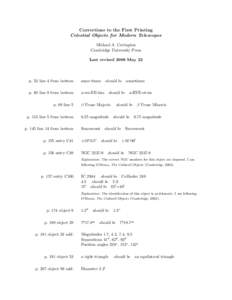41 | Add to Reading ListSource URL: www.covingtoninnovations.comLanguage: English - Date: 2011-04-04 22:16:17
|
|---|
42 | Add to Reading ListSource URL: chandra.harvard.eduLanguage: English - Date: 2015-01-08 09:35:44
|
|---|
43 | Add to Reading ListSource URL: chandra.harvard.eduLanguage: English - Date: 2015-01-08 09:35:43
|
|---|
44 | Add to Reading ListSource URL: www.mpi-hd.mpg.deLanguage: English - Date: 2015-01-23 05:52:51
|
|---|
45 | Add to Reading ListSource URL: cxc.harvard.eduLanguage: English - Date: 2014-12-23 09:41:13
|
|---|
46 | Add to Reading ListSource URL: spacemath.gsfc.nasa.govLanguage: English - Date: 2011-02-04 11:48:20
|
|---|
47 | Add to Reading ListSource URL: spacemath.gsfc.nasa.govLanguage: English - Date: 2010-12-21 09:58:08
|
|---|
48![Chandra :: Photo Album :: G327.1-1.1 :: G327[removed]Handout Chandra :: Photo Album :: G327.1-1.1 :: G327[removed]Handout](https://www.pdfsearch.io/img/0a4c01104fdd235dfdb5bbfcfd5d6b94.jpg) | Add to Reading ListSource URL: chandra.si.eduLanguage: English - Date: 2014-11-17 03:34:00
|
|---|
49 | Add to Reading ListSource URL: cxc.harvard.eduLanguage: English - Date: 2014-12-23 09:41:29
|
|---|
50![Chandra :: Photo Album :: G327.1-1.1 :: G327[removed]Handout Chandra :: Photo Album :: G327.1-1.1 :: G327[removed]Handout](https://www.pdfsearch.io/img/e03f25fb498dabfa6b2a0aca4c44164a.jpg) | Add to Reading ListSource URL: www.chandra.harvard.eduLanguage: English - Date: 2014-11-17 03:34:00
|
|---|